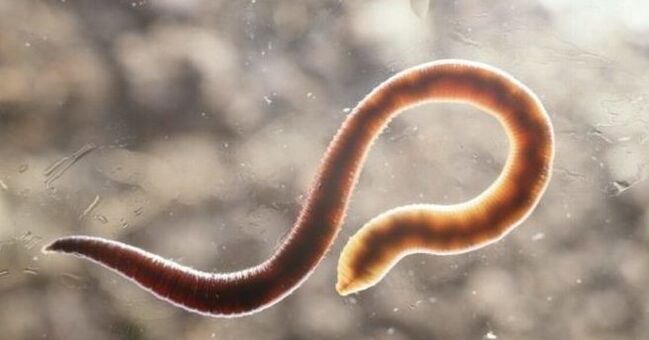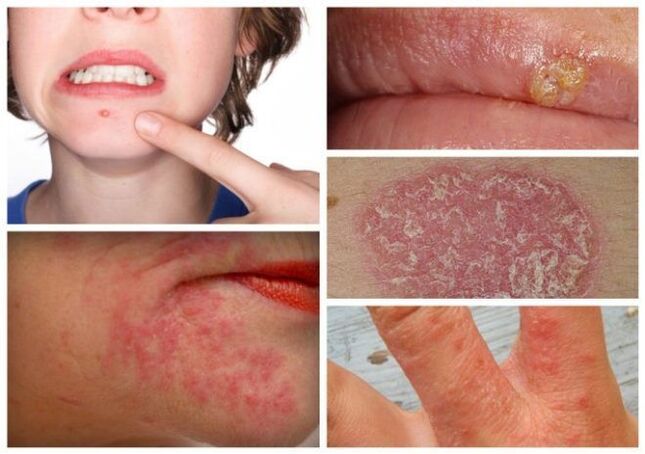How to understand that there are parasites in the body? Many people do not even think about such an issue, and, of course, in vain. It must be understood that during their life in the human body, they can cause the development of many diseases that are quite dangerous. For this reason, it is recommended to undergo preventive examinations and special tests.
General characteristics of parasites
The presence of such living organisms can be in any part of the body, and the more of them in a particular organ, the worse its general condition. In addition to internal organs, the presence of parasitic vital activity can also be observed on the skin, tissues and mucous membranes. This type of pathogen feeds on the food a person consumes.

There are only 2 types of parasites, depending on their habitat in the human body:
- The vital activity of endoparasites is observed directly in the body, ie in internal organs and systems. These include echinococci, giardiasis, viruses, and various types of fungi.
- The vital activity of ectoparasites is observed on the surface layer of the body, ie on the skin. They absorb blood and human cells. Ectoparasites include lice, mites, bed bugs.
The body of an adult is designed so that it can prevent penetration as well as eliminate the vital activity of some parasites. For example, when saliva is produced in the mouth, enzymes are created that prevent worms from multiplying and laying eggs.
The action of such enzymes in such cases is destructive. The protective function is performed by the gastric acidic environment, as well as human immunity. In children, the protective barrier against parasites may simply not work, which can be explained by the still incompletely formed immune system. It is weak immunity that causes the penetration and reproduction of pathogenic organisms.
According to numerous researches, some types of parasites do not give in to the protective barrier of the organism, entering it and destroying it without obvious symptoms and signs. The duration of the incubation period (the moment of entering the body - the first symptoms) can reach several years, during which a person lives a normal life, not knowing about the existence of parasites.
There are several ways to find out if there are parasites in the body, but first of all you must carefully monitor your health, do not lose sight of any, even the slightest changes and symptoms, contact a specialist immediately.
Diseases and pathological conditions that indicate the existence of parasites in the body
You can check for parasites in the body according to the following signs and symptoms:
- stool disorder. This includes frequent constipation and diarrhea. If the parasites are localized in the bile or intestinal tract, and block them by their large size, this can cause infrequent and difficult bowel movements. Some pathogens can produce a hormone-like substance that causes frequent diarrhea. Thus, diarrhea is considered not only a protective reaction of the body to the consumption of "wrong" food, but also a sign of the presence of a parasitic infection in the body.
- Flatulence. Increased gas production and bloating are symptoms of the presence of parasites in the small intestine, which is the cause of the development of the inflammatory process. Signs of bloating will be observed until the person is cured of the worms.
- "Irritable Bowel". A similar syndrome is due to irritation of the intestinal wall by parasites and the inflammatory process caused by it. At the same time there are various symptoms of disorders of the gastrointestinal tract, reduced absorption of all nutrients, including fats. If the small intestine cannot assimilate fat, it begins to penetrate the area of the large intestine, causing cramps, constipation and diarrhea.
- Pain in joints and muscles. Often the parasites localize in the muscles and joints, causing pain, which a person confuses with arthritis.
- Allergic reaction. With the excessive release of toxic substances by worms, the immune response is activated in the body through the production of an increased dose of protective cells - eosinophils. Such cells become the cause of the development of an inflammatory process in the tissues, which causes an allergic reaction.
- Skin pathologies. Symptoms in such cases can be expressed in urticaria, various types of rash, eczema, skin wounds, tumors, papillomas. Worms in the intestines can damage the skin through the appearance of acne, seborrhea, various blemishes, wrinkles.
- Chronic fatigue. The symptoms in this case are as follows: constant general malaise, apathy, depression, poor memory. Such signs can be explained by a violation of the absorption of nutrients from food.


Diagnosis of parasites in the body
It is not enough to determine the pronounced symptoms of the presence of parasites. It is also necessary to confirm their presence and therapeutic methods. How to recognize parasites in the human body in stationary conditions? Determining them can be both laboratory and with the help of equipment. Laboratory methods for diagnosing worms include:
- microscopy. The most common method for detecting worms. During the diagnosis, human feces are examined for the presence of eggs of such organisms. It is not always possible to identify worm eggs after the first analysis. In some cases, several procedures are required.
- Serological study. This study, tested for years, has become one of the most popular methods for testing blood for antibodies and antigens to various infections. In any case, the human immune system will react to pathogenic microorganisms that penetrate it. This type of diagnosis includes tests such as immunofluorescence reaction, polymerase chain reaction, enzyme immunoassay.

Hardware methods for diagnosing parasites in the body include:
- Conducting an ultrasound examination to detect echinococcus in the body.
- X-ray examination to detect parasites, for example, in the lungs.
- Endoscopy and biopsy. Similar types of diagnostics are prescribed for the detection of helminths in internal organs, followed by taking tissue samples for research.
Elimination of parasites from the body
We learned how to determine the presence of parasites in the body. Now it is worth thinking about ways to remove them. The therapy of parasitic infection is carried out in 3 phases.
Phase 1 - Preparatory
During this period, the human body must be prepared for the main treatment:
- sorbents are prescribed for taking, which help cleanse the body and reduce the manifestation of symptoms of intoxication;
- of the choleretic agents, it is worth mentioning preparations based on the extract of immortelle flowers and cattle bile;
- to eliminate spasm, you can drink decoctions of plants such as St. John's wort, wild rose, valerian during the day;
- Enzyme preparations are also recommended.
Phase 2 - Implementation of deworming
The main antiparasitic therapy consists of taking a special medicine prescribed by a specialist. The dose should be determined only by a doctor, because such drugs are quite toxic and can be dangerous to health if the required amount is exceeded.
Biologically active additives are also often used, the components of which contain bitter plants that have an anthelmintic effect on the body. Supplements have fewer side effects and do not cause dysfunction of organs such as the liver.
Phase 3 - Recovery period
At this time, it is necessary to take probiotics and prebiotics in order to restore the normal work of the gastrointestinal tract. Therapy with vitamin complexes, enzymes, hepatoprotectors is also recommended, which will help normalize the activities of organs such as the liver, gallbladder and pancreas.
Only a complex treatment will help get rid of not only parasites in general, but also the negative consequences of their life activity.






































